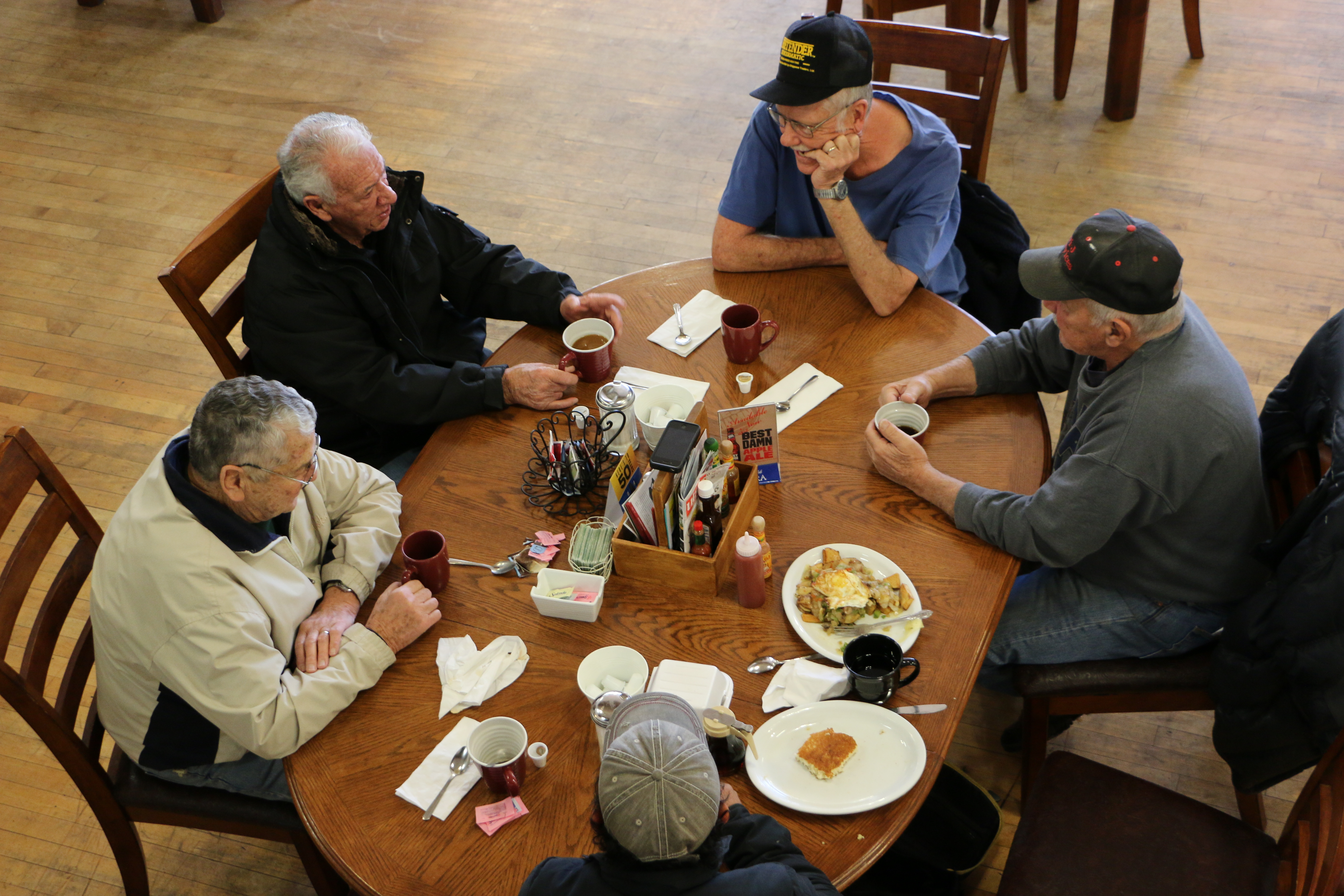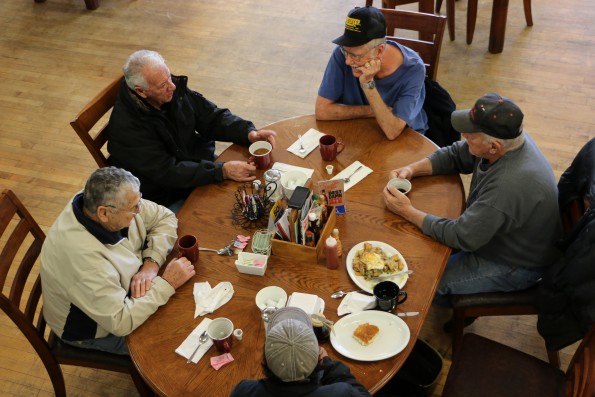
Helper, Utah is flanked by the sheer vertical walls of the snow-capped Book Cliffs. At dawn, the morning light illuminating them reflects down on Main Street. Up Spring Canyon Road west of Helper, a handful of ghost towns remain hushed. Residents wonder if Helper, too, will become a ghost town.
Helper is a city with deep roots and new growth. New resident artists envision a bright and prosperous future, but the mining community and long-time residents are nostalgic for the days when 15 operational mines employed thousands in the area. The deep-rooted residents are not interested in being weeded out by a new economy.
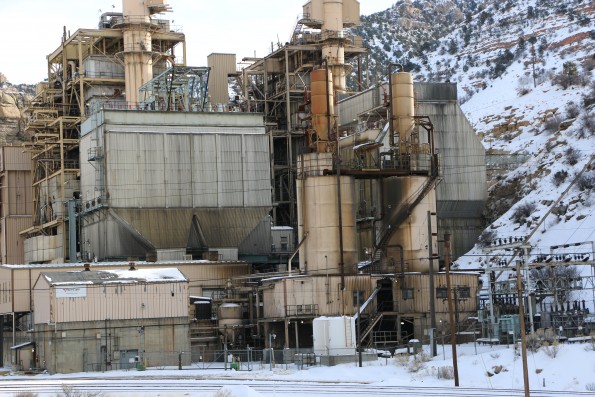
Spring Canyon was once home to 5,000 residents in mining camps and towns. Now the snow-covered canyon is occupied instead by an abundance of rabbits. More recently, in response to new EPA mercury regulations, the city’s power plant was mothballed, killing another 40 jobs. While Carbon County’s industry and Helper’s population decline, people nonetheless are happy to be here, away from the “craziness of city life.”
Cindi Edwards Curry is always on the move. Her three businesses, the Balance Rock Eatery, Happiness Within coffee shop and A&E Grocery are thriving because people are choosing to stop here enroute to Moab, some staying a few days to enjoy the biking, canyons and ghost towns. Angel Villa Ramirez moved here from Salt Lake City and says he loves the hunting, mountains and fresh air. He operates the town’s only motel, which is nearly sold out most nights.
Drinking a coffee at Happiness Within, a group of women lament the loss of the power plant. “I hope Helper doesn’t become another Castle Gate,” one remarks. When asked if they wouldn’t want Helper to become a tourist hub like former mining towns Park City and Moab, she replies, “So we can all get jobs for $7.50 per hour? No. We want real jobs. High-paying jobs.”
An article in the local news describes a European company’s proposal to construct a liquefied coal plant that would turn coal into diesel fuel. The new company would provide 300 jobs, and, in a town meeting, only two people opposed the idea based on the pollution the facility would produce.
Second-generation Helper resident Tom Bruno has lived here his entire life. Bruno is also one of the town elders “There’s President Trump and his sidekick,” laughs Balance Rock server Teri Barney. “These guys come in every morning to solve all the world’s problems.” At breakfast, Bruno is joined by Ken Turner and Chuck Ghirardelli, who operated the town pharmacy from the 1960s until 1994.
Ghirardelli tells the story of how he came to own the Main Street Pharmacy. He was away attending school, but returned when the dying owner’s wife offered to sell him the business. “I didn’t have a pot to piss in, nor a window to throw it out of,” he recalls. Chuck acquired the pharmacy and operated it for over 30 years. A Walmart opened in neighboring Price about the time Ghirardelli closed his business. Like many who still live in Helper, his roots run deep.
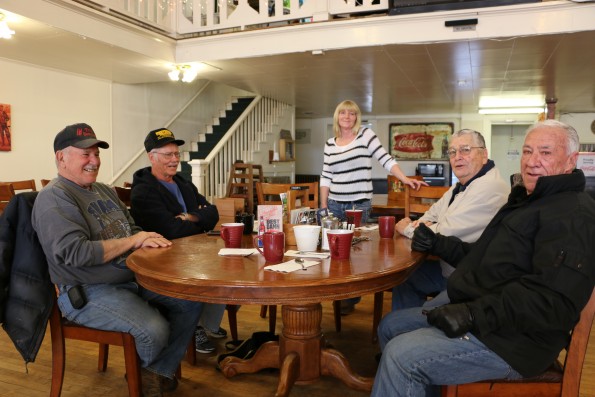
Ken Turner couldn’t comment on the local history because he is a transplant, having moved to Helper in the 1960s to work on the railroad. The men are jovial and seem to have an infinite supply of entertaining stories. Their fathers, first-generation Italian immigrants, came here and the men loved growing up in the rough-and-tumble West.
Lured by labor agents promising wealth, immigrants migrated to Helper and provided the minimally-paid labor force mining required. Eventually, most joined unions.
The Book Cliffs surrounding Helper and Price attracted wealthy speculators, including mining mogul “Uncle Jesse” Knight. But the boom- and-bust cycles of coal production coincided with the national economy. In times of war, production soared; in times of peace or economic downturns, it ebbed.
In this predominantly Catholic community, other industries that provided alternate sources of income emerged during times when coal was in short demand. Brothels, bars and underground card games made Helper a rough and rowdy enclave where the law was a fuzzy line blurred by a series of sheriffs said to have protected the industries that attracted the “tourists.” Men on “hunting trips” patronized Main Street’s 15 brothels.
Since the late 1980s, the coal industry has been in decline, and more than 20 mines in the surrounding region are shuttered. Jobs have disappeared and so have the residents.
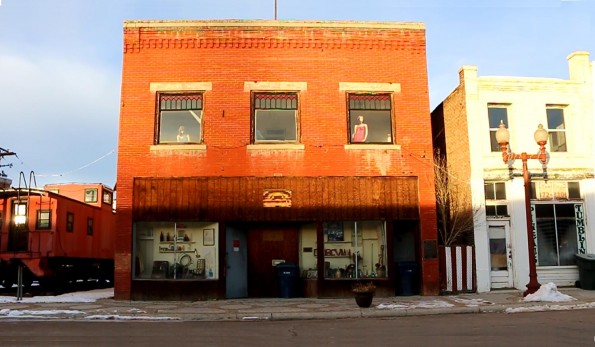
In its heyday, Helper was a midsize town located in Carbon County, one of the top coal-producing regions in the country. But for the last twenty years, the coal industry has been in decline, and with just two mines remaining and national environmental groups seeking to end dependence on fossil fuels, it appears the demand for coal is not coming back anytime soon.

